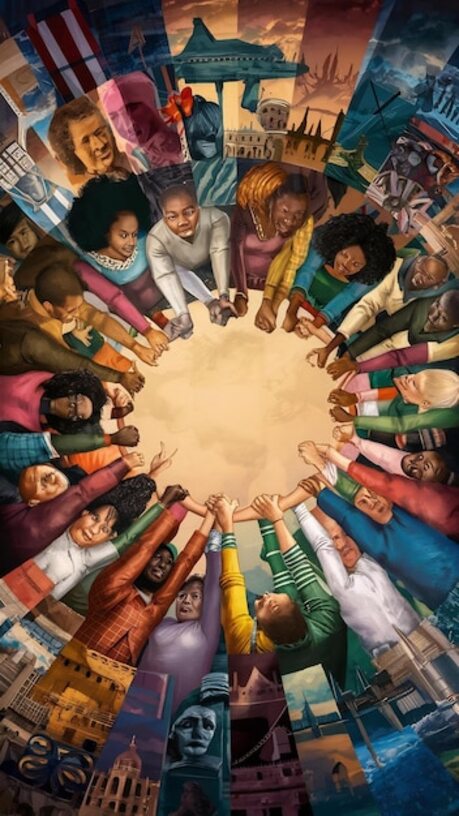How cultural diversity transforms emerging value

Cultural diversity has become a key driver for the transformation of emerging areas, increasing their added value and attracting investments. In this article, we will explore how the fusion of unique traditions, flavors, and lifestyles not only enriches the social environment but also boosts local economic development. From the revitalization of spaces to the rise of tourism, we will discover why embracing diversity is essential to maximizing the potential of these growing areas.
The influence of local culture on economic growth.
Local culture plays a fundamental role in the economic growth of emerging communities, as its uniqueness attracts both residents and visitors. Local traditions, festivities, and customs not only generate a sense of identity and belonging but also become tourist attractions. These cultural elements can be leveraged to create events and festivals that encourage the arrival of tourists, which in turn boosts the local economy by increasing consumption in restaurants, shops, and services. Thus, culture transforms into a driver of sustainable development that benefits all stakeholders involved.
Additionally, the influence of local culture fosters innovation and entrepreneurship within these communities. By valuing their cultural roots, entrepreneurs can develop unique products and services that highlight their heritage and history. This not only diversifies the economic offerings of the area but also creates jobs and opportunities for local citizens. The intersection of culture and economy creates a favorable environment for investment, attracting capital interested in authentic projects that reflect the cultural richness of the region. In this way, by integrating cultural elements into the economic fabric, emerging areas can experience sustained and significant growth.
2. Community spaces: cultural centers and their impact on added value.
Cultural centers play a fundamental role in the transformation of emerging areas by providing a space where cultural diversity is celebrated and promoted. These places not only serve as meeting points for different communities but also act as catalysts for the exchange of ideas and traditions. By integrating artistic activities, workshops, and community events, cultural centers foster a sense of belonging and social cohesion that attracts new residents and investors. This revitalization of the social fabric contributes to increasing the value of the surrounding areas, as a vibrant community is seen as an attraction for both those looking to settle down and those wishing to invest in local development.
Additionally, cultural centers can be significant economic engines. By attracting local visitors and tourists, they generate commercial activity in their surroundings, benefiting restaurants, shops, and other local businesses. This flow of people and resources not only elevates the economic profile of the area but also encourages the development of adequate infrastructure that improves the quality of life. In this sense, by becoming dynamic cultural epicenters, these spaces not only enhance local identity but are also essential for increasing emerging value by transforming previously neglected areas into desirable destinations for living and investing.
3. Diverse gastronomy: a magnet for tourists and investors.
Gastronomy is one of the fundamental pillars of cultural diversity and acts as a magnet for both tourists and investors. In many emerging cities, the blend of flavors and traditional culinary techniques with modern influences has resulted in a vibrant food scene that attracts visitors seeking authentic experiences. Local markets, innovative restaurants, and food festivals not only celebrate this culinary wealth but also promote cultural exchange. As these areas become recognized gastronomic destinations, they increase their visibility on the tourist map, resulting in an uptick in visitor flow and a greater demand for related services.
Additionally, investment in local gastronomy can create a positive domino effect on the economy of emerging communities. Entrepreneurs can find opportunities to open new food-focused businesses, from food trucks to gourmet restaurants. These initiatives not only create jobs but also stimulate the growth of related industries, such as local agriculture and sustainable tourism. By attracting investors interested in the economic potential that this sector offers, the social and economic fabric of the area is further strengthened, making it an attractive place to live and visit. Diverse gastronomy is not just a food option; it is a powerful strategy to promote the comprehensive development of these dynamic communities.
4. Art and creativity: transforming neighborhoods through cultural initiatives.
Art and creativity are powerful tools that have the ability to transform entire neighborhoods, turning them into vibrant cultural epicenters. Initiatives like community murals, art festivals, and creative workshops not only beautify the urban environment but also foster a sense of belonging among residents. These artistic activities allow communities to express their identity and diversity, attracting both visitors and new residents interested in experiencing a lifestyle enriched by various cultural influences. As these projects are implemented, spaces are created where social interaction flourishes, contributing to a stronger community cohesion.
Moreover, the promotion of local art can significantly boost the neighborhood's economy. Emerging galleries and artists' studios attract tourists and art lovers, creating opportunities for local entrepreneurs and small businesses. Cafés, craft shops, and organic markets often arise around these artistic initiatives, thus contributing to the sustainable economic development of the area. This virtuous cycle not only enhances the neighborhood's value by making it more attractive to investors and developers but also highlights the intrinsic value of cultural diversity as a driver of urban revitalization. The union between art and community not only transforms physical landscapes; it also redefines what it means to live in an environment where every corner tells a unique story.
5. The role of local markets in the valuation of emerging areas.
Local markets play a fundamental role in the valuation of emerging areas, as they become the epicenter where diverse cultures, traditions, and products converge. These spaces not only provide a platform for local entrepreneurs to showcase their work but also foster social interaction and community cohesion. By promoting indigenous and artisanal products, the markets strengthen the cultural identity of the area, attract both visitors and residents, and generate a sense of belonging that is crucial for the sustainable development of any community.
Additionally, local markets act as economic catalysts by creating job opportunities and stimulating internal consumption. As people are drawn to the variety of unique products that represent the cultural diversity of the area, the flow of visitors and tourists increases. This not only benefits local merchants but also boosts other sectors such as gastronomy, tourism, and services. Thus, these spaces not only enhance the value of the neighborhood or city in question but also create a virtuous cycle where culture and economy feed into each other to achieve comprehensive growth.
6. Social inclusion: how diversity strengthens sustainable communities.
Social inclusion is a fundamental pillar in the construction of sustainable communities, and this is clearly reflected in how cultural diversity can bring people together. By fostering an environment where different traditions, languages, and perspectives coexist, communities not only gain cultural richness but also develop a social resilience that allows them to face common challenges. The variety of experiences and knowledge that each group brings contributes to better decision-making and more creative and innovative solutions to local problems. Thus, inclusion becomes a catalyst for collective growth, where all members of the community have a voice and can actively participate in the development of their environment.
By promoting diversity as an essential value within emerging communities, a more dynamic and accessible economy for all is fostered. Initiatives that celebrate this plurality often attract new entrepreneurs and artists, who bring their unique talents and create opportunities for cultural and commercial exchange. This interaction not only generates local employment but also stimulates inclusive tourism, attracting visitors interested in authentic experiences that reflect the multicultural identity of the place. In this way, diversity not only strengthens social ties among residents but also drives sustainable economic development by diversifying income sources and maximizing the tourism potential of these vibrant areas.
7. Urban strategies that promote cultural diversity and their profitability.
Urban strategies that promote cultural diversity are essential for the development of vibrant and resilient communities. The implementation of inclusive public spaces, such as plazas, markets, and cultural centers, allows different ethnic and social groups to gather and share their traditions. This not only strengthens the social fabric by promoting interaction among diverse cultures but also creates an appealing environment for tourists and locals. Such spaces become meeting points where festivals, food fairs, and artistic events are celebrated, boosting local commerce and generating economic opportunities for entrepreneurs from various backgrounds.
Additionally, these urban strategies can be highly profitable by increasing the value of properties in areas where they are implemented. Real estate developments that integrate unique cultural elements tend to attract the interest of investors looking for areas with growth potential. By attracting a diverse population, these localities experience a surge in demand for services that meet the needs of their residents. From restaurants offering international cuisine to shops selling local crafts, each new business contributes to revitalizing the area's economy. In this sense, promoting cultural diversity is not only an act of social inclusion but also a smart strategy to maximize economic benefits in emerging urban environments.
8. Successful cases: global examples where diversity has increased real estate value.
Cultural diversity has proven to be a catalyst for real estate development in various parts of the world. A notable example is the Wynwood neighborhood in Miami, which, through the incorporation of local artists and the celebration of its multicultural heritage, has transformed an industrial area into a vibrant artistic and tourist center. This change has not only elevated property prices but has also attracted a variety of businesses and entrepreneurs looking to take advantage of the creative atmosphere. The combination of street art, galleries, and a diverse culinary offering has made Wynwood a must-visit destination, showcasing how culture can revalue urban spaces.
Another notable case can be found in the Kreuzberg district of Berlin, where the influx of immigrants and their rich cultural mix have radically revitalized the area. This neighborhood, known for its multicultural festivals and eclectic nightlife, has seen a significant increase in its property value thanks to the mix of cultures that enrich it. The new residents bring different traditions and lifestyles, creating a dynamic community that attracts both locals and tourists. As more people seek to settle in places with a strong cultural identity, Kreuzberg stands as a clear example of the positive impact that diversity has on real estate value.



